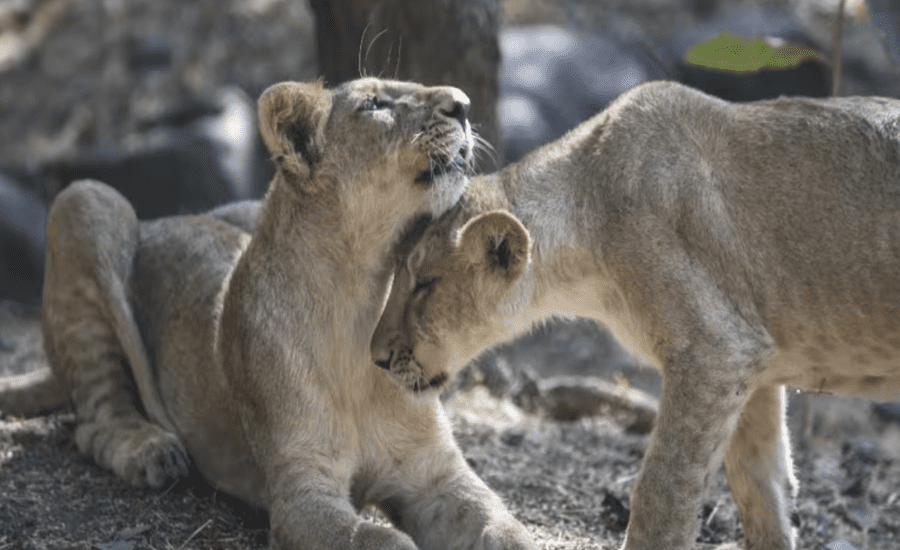India’s population of Asiatic lions has seen a remarkable increase of over one-third, reaching 891 according to the latest five-yearly census released on Wednesday, May 21. The figures have provided a significant boost to conservation efforts aimed at protecting the vulnerable species, which is now found only in Gujarat.
Also Read: 1000 Lions & 5000 Tigers… Coming Soon
The Asiatic lion, once widespread from the Middle East to India, has been reduced to a single isolated population in the Gir Wildlife Sanctuary and surrounding areas of Gujarat. Gujarat Chief Minister Mr. Bhupendra Patel highlighted the consistent growth in lion numbers over the decades. “The Asiatic lion population, which stood at 304 in 1995, rose to 674 in 2020 and now has reached 891,” he told reporters.
Slightly smaller than their African counterparts, Asiatic lions are distinguished by a prominent fold of skin along their bellies. Their population plummeted to as low as 20 in 1913 due to hunting and habitat loss. Since then, focused conservation efforts have helped the species make a steady recovery.
The latest lion census, conducted over four days, spanned more than 35,000 sq km across 11 districts in Gujarat. Conservationist Mr. Priyavrat Gadhvi, a former member of the Gujarat Wildlife Board, attributed the rise in numbers to effective conservation strategies. “Another important factor is the political will and the strong support of local communities living near forest areas. Together, they have played a vital role in protecting the species,” he said.
Despite the encouraging growth, conservationists continue to express concern over the risks posed by the species’ confinement to a single habitat. The World Wide Fund for Nature (WWF) has warned of the threat of genetic inbreeding and vulnerability to potential catastrophes such as disease outbreaks or wildfires.
Lions remain a symbol of pride in Gujarat’s Saurashtra region, where coexistence between humans and the majestic cats is a common sight. Local cattle-herding communities live alongside the animals, and it is not unusual to see lions crossing highways as onlookers pause in awe.
The Gir sanctuary also attracts a large number of tourists annually, with nearly 550,000 visitors exploring the area in open-top jeeps, hoping to glimpse lions, leopards, panthers, and other wildlife in their natural habitat.
With the lion population showing promising growth, conservationists stress the need for continued vigilance and the exploration of new habitats to ensure long-term survival of the iconic Asiatic lion.
Also Read: Tech-Driven Conservation: How Gir Forest is Pioneering Wildlife Protection



























